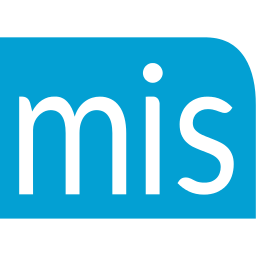 In Top Characteristic Part Eight, we’re going back to cold calling and qualifying to reveal an important skill all top producers possess:
In Top Characteristic Part Eight, we’re going back to cold calling and qualifying to reveal an important skill all top producers possess:
Top Characteristic Part Eight: Treat all gatekeepers with courtesy and respect.
If you have to make cold or warm calls to prospects, then you probably have to deal with your share of gatekeepers. These can be receptionists, office managers, assistants, etc. No matter what role they have, whoever stands between you and your prospect is someone you have to deal with first.
Most sales people struggle to effectively deal with and get past these so called “gatekeepers.” And the majority of the time, the problems they have they bring on themselves. The reason is because most sales reps treat these people as obstacles to get past by using tricks or by acting authoritatively or by being downright rude. And you can imagine how that goes.
In addition, many sales people simply don’t understand some basic rules in regards to how to speak to gatekeepers, and so they create their own problems by giving incomplete information which just triggers the gatekeepers to do their job and keep them away from the decision maker.
Here is a common mistake:
Rep: “Oh hi, is Mr. Jones in?”
Gatekeeper: “Can I tell him who’s calling?”
Rep: “This is Bob.”
Gatekeeper: “Bob who?”
Rep: “Bob Smith.”
Gatekeeper: “With what company?
Rep: “The XYZ company.”
Gatekeeper: “Will he know what this call is regarding?”
Rep: “Ah, it’s about his (whatever the rep is selling…)”
Gatekeeper: “Has he spoken to you before?”
Rep: “Ah, no……”
Once a sales rep gets into that kind of dialogue with a gatekeeper, they will rarely win. Over and over again they will get turned away.
The way to fix all this is easy: Always give your first and last name and the company you’re calling from right away. And this is crucial: always end with an instructional statement like: “Is Bob available please.”
And by the way that’s crucial, too: always be polite and use please – two or three times.
Here’s an effective opening:
Rep: “Hi could I speak with Bob please?
Gatekeeper: “Can I tell him who’s calling?”
Rep: “Yes please, please tell him that (your first and last name) with (your company name) is holding please.”
If you do this right and with a smile in your voice, you’ll avoid 80% of the screening that you get now. Guaranteed.
In addition, if you don’t know a contact’s name, use the “I need a little bit of help, please,” technique. But always wait for them to respond before you ask for it:
Rep: “Hi, I need a little bit of help please.”
[Now pause long enough the gatekeeper to respond]
Gatekeeper: “What do you need?”
Rep: “I need to speak with the person who handles your _________. Who would that be, please?”
This is very effective if again you say it with a smile in your voice.
Last technique: Speaking of a smile, always put a BIG smile on your face right before your prospect (or gatekeeper) picks up the phone. It does wonders for how you project your attitude and opening line.
And, don’t be afraid of building a little bit of rapport with the gatekeeper as well. Ask them if they’re happy it’s Friday, or how Monday is going, or if they’re glad it’s hump day. Ask about the weather. Anything to be personable and to show them that you value them as people rather than just an obstacle to get around.
The bottom line is that top producers know how to interact with gatekeepers and know how to gain their trust and get them on their side. By using the techniques above, you can now begin doing that as well.

 Top Characteristic Part Six is difficult for many sales people to develop and practice, yet it’s one of the most important of skills to cultivate. And it is:
Top Characteristic Part Six is difficult for many sales people to develop and practice, yet it’s one of the most important of skills to cultivate. And it is: In today’s ongoing series of the “Top Ten Characteristics of Top Sales Producers,” I’m going to give you a powerful way to open your closes. This is a technique that top producers use all the time, but that most sales reps are afraid of using.
In today’s ongoing series of the “Top Ten Characteristics of Top Sales Producers,” I’m going to give you a powerful way to open your closes. This is a technique that top producers use all the time, but that most sales reps are afraid of using. I’d like to thank many of you for your emails and comments regarding last week’s ezine article on the first characteristic of making a commitment to doing whatever it takes to be a top sales producer.
I’d like to thank many of you for your emails and comments regarding last week’s ezine article on the first characteristic of making a commitment to doing whatever it takes to be a top sales producer. Most sales reps hate getting objections. When they get them, their hands start to sweat, their heart takes the elevator down into the pit of the stomachs, and they start wishing they had gotten that graduate degree and avoided sales altogether.
Most sales reps hate getting objections. When they get them, their hands start to sweat, their heart takes the elevator down into the pit of the stomachs, and they start wishing they had gotten that graduate degree and avoided sales altogether. Last week I gave you the first Three Proven Techniques to help you increase your chances of getting your calls returned. Now let’s look at the final two:
Last week I gave you the first Three Proven Techniques to help you increase your chances of getting your calls returned. Now let’s look at the final two: If you’re struggling to get your voice mails returned, then you’re not alone. Industry stats show that less than 10% of voice mails to new prospects are returned. Because of this, finding the right voice mail message, and knowing a few proven techniques, can be the key to not only making contact with those hard to reach sales leads, but also in developing relationships and getting new accounts.
If you’re struggling to get your voice mails returned, then you’re not alone. Industry stats show that less than 10% of voice mails to new prospects are returned. Because of this, finding the right voice mail message, and knowing a few proven techniques, can be the key to not only making contact with those hard to reach sales leads, but also in developing relationships and getting new accounts. I had a landscaper install a new sprinkler system the other day, and as we stood under the warming sun waiting for his crew to set up he asked me what I did for a living. I told him I was a sales trainer (this is the easiest answer as for some reason as soon as I add “inside sales” to anyone out of the industry, they have no idea what I’m talking about).
I had a landscaper install a new sprinkler system the other day, and as we stood under the warming sun waiting for his crew to set up he asked me what I did for a living. I told him I was a sales trainer (this is the easiest answer as for some reason as soon as I add “inside sales” to anyone out of the industry, they have no idea what I’m talking about). I was asked by a client to make some cold calls into an upper “C” level suite to set appointments for his outside sales team, to show the inside team how it’s done. His inside team first of all had trouble getting these busy people on the phone, and then getting past the first paragraph of their script before getting cut off.
I was asked by a client to make some cold calls into an upper “C” level suite to set appointments for his outside sales team, to show the inside team how it’s done. His inside team first of all had trouble getting these busy people on the phone, and then getting past the first paragraph of their script before getting cut off. If you are trying to set appointments for an outside sales team, or even if you’re trying to generate leads so you can do an over the phone demo later, then you know all about put offs and stalls. While I’ve previously discussed the common ones like, “I’m not interested,” and “Just email me something,” there others that are somewhat harder to overcome…
If you are trying to set appointments for an outside sales team, or even if you’re trying to generate leads so you can do an over the phone demo later, then you know all about put offs and stalls. While I’ve previously discussed the common ones like, “I’m not interested,” and “Just email me something,” there others that are somewhat harder to overcome…